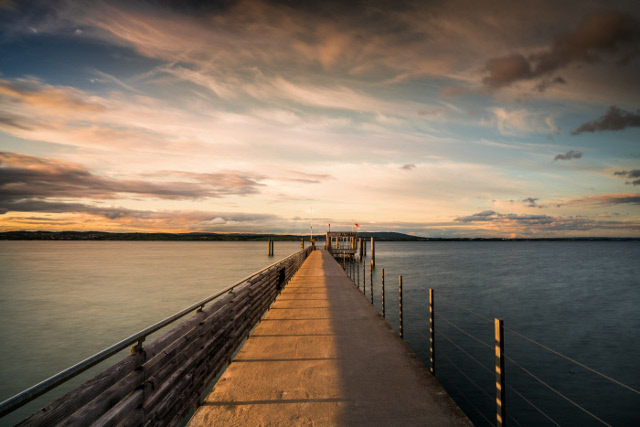Rekordnacht liegt hinter uns: vielerorts wärmste Nacht seit Messbeginn! Tiefstwert Güttingen/TG 25,2°, alter Rekord 20,2° am 17.7.2007 ^jz pic.twitter.com/DhqcK9XQr5
— SRF Meteo (@srfmeteo) June 23, 2017
WEATHER
Parts of Switzerland experience hottest night EVER
Last night in Switzerland was hotter than ever before in some places, according to meteorologists.
Published: 23 June 2017 11:41 CEST

Güttingen on Lake Constance was the hottest place in the country on Thursday night. Photo: Ivo Scholz/Swiss Tourism
A partly cloudy night in the middle of a heatwave meant temperatures surpassed 20 degrees – the threshold indicating a ‘tropical’ night – in almost all of the country on the night of Thursday to Friday, said SRF Meteo.
And in some parts the mercury touched 25 degrees, breaking local records.
The hottest place in the country was Güttingen on Lake Constance in the canton of Thurgau which broke the 25-degree mark, five degrees hotter than its previous warmest night ten years ago.
Zurich broke its previous record by three degrees by hitting 24.2, making it the hottest ever night since temperatures were first recorded in 1882.
Neuchâtel (24 degrees), Vevey (23.3 degrees), St Gallen (23.2 degrees) and Fribourg (22.1 degrees) all experienced tropical temperatures, said MeteoNews.
But nowhere quite managed to break the Swiss record, held by Meiringen in the Bernese Oberland where it reached 26 degrees on one steamy night in 2009.
The hot weather is set to persist on Saturday before storms cool things down on Sunday and into next week.
Url copied to clipboard!



 Please whitelist us to continue reading.
Please whitelist us to continue reading.
Member comments